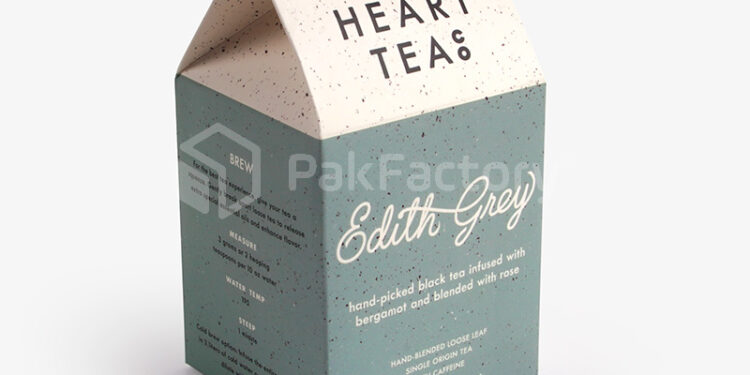Creating custom tea boxes is a comprehensive process that involves careful planning, design, and execution. Custom tea packaging not only protects the tea but also serves as a powerful marketing tool, helping to differentiate your product on the shelves and attract customers. This article will walk you through the step-by-step process of creating custom tea box packaging, from initial concept to final production.
Define Your Objectives
Before you begin designing your custom tea boxes, it’s crucial to define your objectives. Ask yourself the following questions:
- What is the primary purpose of the custom tea box packaging?
- Who is your target audience?
- What message do you want to convey through the packaging?
- What budget do you have for the packaging project?
Clearly defining your objectives will help guide the design and production process, ensuring that your custom tea packaging aligns with your brand’s goals and resonates with your target market.
Research and Inspiration
Once you have a clear understanding of your objectives, it’s time to gather inspiration. Look at existing custom tea boxes in the market to see what works and what doesn’t. Pay attention to design trends, materials, and packaging styles that appeal to your target audience.
You can also draw inspiration from other industries and products. For example, luxury chocolate boxes or high-end cosmetic packaging can provide valuable insights into design elements that exude sophistication and quality.
Concept Development
With your research in hand, start brainstorming ideas for your custom tea box packaging. Consider different shapes, styles, and materials that could set your product apart. Sketch out various concepts and evaluate how well they align with your brand identity and objectives.
During this stage, it’s essential to think about the practical aspects of the packaging, such as:
- How will the packaging protect the tea?
- Is the design functional and easy to use?
- Does the packaging accommodate the size and shape of your tea products?
Design and Prototyping
Design begins after a few strong ideas. Create complex digital designs of your personalized tea boxes. Design software lets you generate realistic mockups and 3D models of the final product.
Collaboration with a graphic designer ensures that colors, font, and artwork are cohesive and appealing. The design should feature the brand logo, product name, ingredients, and regulatory information.
Make unique tea packaging prototypes after designing. Prototyping lets you test the design’s functionality and make improvements before production.
Material Selection
Choosing the right materials by custom pack box for your custom tea boxes is a critical step in the process. The material you select will impact the packaging’s durability, appearance, and environmental footprint. Common materials for custom tea packaging include:
- Cardboard: A versatile and cost-effective option, available in various thicknesses and finishes.
- Corrugated Board: Ideal for heavy-duty packaging that requires extra protection.
- Metal: Provides a premium look and excellent protection against light and moisture.
- Eco-Friendly Materials: Such as recycled cardboard or biodegradable plastics, which appeal to environmentally conscious consumers.
Consider the pros and cons of each material in relation to your product and brand values. For example, if sustainability is a key part of your brand identity, opt for eco-friendly materials that align with your message.
Printing and Finishing Techniques
The next step is to choose the printing and finishing techniques for your custom tea box packaging. These techniques can enhance the visual appeal and tactile experience of the packaging. Some popular options include:
- Offset Printing: Offers high-quality, vibrant prints and is suitable for large production runs.
- Digital Printing: Ideal for smaller runs and provides flexibility for customization.
- Embossing/Debossing: Adds texture and depth to the design, making certain elements stand out.
- Foil Stamping: Adds a metallic finish to specific areas, creating a luxurious look.
- UV Coating: Provides a glossy finish that enhances colors and protects the packaging.
Discuss these options with your printer to determine the best combination of techniques for your custom tea boxes.
Production and Quality Control
Production begins after the design and materials are chosen. Work with a reputable packaging company to ensure high-quality custom tea boxes. Maintaining open communication with the manufacturer to resolve concerns is crucial during this period.
Implement strict quality control to examine packing for faults and discrepancies. This may involve reviewing a production run sample batch and making any necessary improvements before full production.
Assembly and Fulfillment
After production, customized tea boxes must be assembled and filled with tea. Assembly can be done manually or automatically depending on packaging complexity. Seal and protect the tea in packaging to retain freshness and quality.
Work with a fulfillment facility to assemble and distribute packaged goods. This is essential for sending your personalized tea packaging to retailers and customers in pristine shape.
Marketing and Launch
With your custom tea boxes ready, it’s time to focus on marketing and launching your product. Use the packaging to tell your brand’s story and highlight the unique qualities of your tea. High-quality images and videos of the packaging can be used in promotional materials, social media campaigns, and on your website.
Consider offering limited-time promotions or special editions of your custom tea boxes to create buzz and drive sales. Engaging with influencers and encouraging customers to share their unboxing experiences on social media can also help boost visibility and generate word-of-mouth marketing.
Review and Iterate
After the launch, gather feedback from customers and retailers about your custom tea box packaging. Pay attention to comments about the design, functionality, and overall experience. Use this feedback to make any necessary improvements and iterate on future packaging designs.
Continuously reviewing and refining your custom tea packaging ensures that it remains relevant and effective in the ever-evolving market. By staying attuned to customer preferences and industry trends, you can keep your packaging fresh and appealing, helping to maintain your brand’s competitive edge.
Conclusion
Planning, designing, and building unique tea boxes is a complex process. These steps will help you create personalized tea packaging that protects, appeals, and engages customers. From setting goals and finding inspiration to designing and launching the product, each step is vital to developing packaging that resonates with your target audience and boosts brand success. Strategically investing in intelligent and inventive packaging can help your tea brand develop and succeed in the competitive tea industry.































